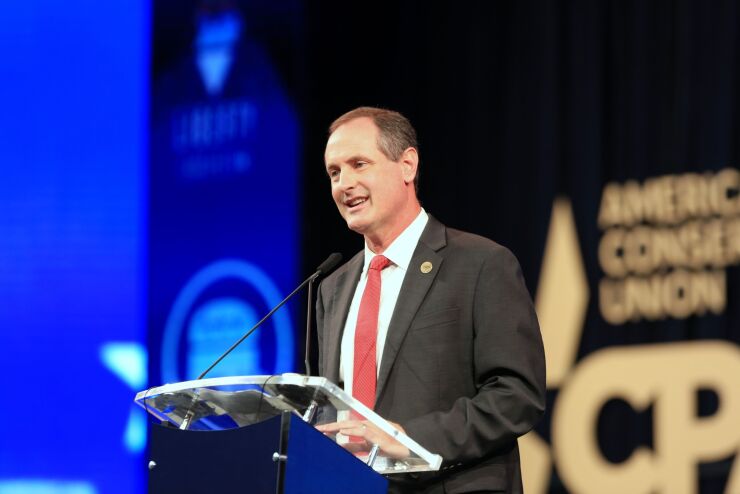Federal banking regulators’ decision to resume a 9% community bank leverage ratio in 2022 has triggered a forceful pushback from industry advocates, who are throwing their weight behind legislation that would fix the ratio between 8% and 8.5% through 2024.
Rep. Tracey Mann, R-Kan., introduced the Community Bank Relief Act on Dec. 7 to fix the ratio at its lower range. While the bill is still in the early stages of consideration and couldn't possibly become law before the end of the year, banking industry advocates are hopeful that its existence will prompt regulators to reverse course on their own.
“We’re hoping they’ll have second thoughts,” said Chris Cole, executive vice president and senior regulatory counsel at the Independent Community Bankers of America. Otherwise, community banks might feel forced to slow lending and actually shrink their balance sheets to comply with the new, higher capital requirement, Cole said.
As they grapple with thin margins and record liquidity, smaller banks “need this capital relief … so they can do the kind of lending they want to in their communities,” Cole said.

The community bank leverage ratio was introduced in 2018 to spare small institutions from the rigors of complex Basel risk-based capital standards. Under the Economic Growth, Regulatory Relief, and Consumer Protection Act, banks with assets of $10 billion or less that hold sufficient Tier 1 capital are deemed to have satisfied regulators’ risk-based and leverage capital requirements.
With the onset of COVID, the March 2020 CARES Act included a measure that temporarily lowered the Community Bank Leverage Ratio, first to 8%, then, after Jan. 1, 2021, to 8.5%. Bank groups wanted to keep the 8.5% threshold in place for at least another year.
Last week, however, the Federal Reserve, Office of the Comptroller of the Currency and Federal Deposit Insurance Corp. announced that the leverage ratio would
According to Cole, it wouldn’t have been much of a stretch to keep the lower leverage ratio in place another year.
“All we’re asking for is a four-quarter grace period. Just extend it and call it a day,” Cole said.
The May 2018 law, known commonly as the Crapo Bill, gave banking regulators discretion to set the leverage ratio between 8% and 10%. They opted for a middle-of-the-road 9% community bank leverage ratio, but it was a move that upset bankers who wanted an 8% leverage ratio. Now, with the economy still struggling to recover from the ravages of COVID-19, those bankers are redoubling calls for a lower level.
“The pandemic is still with us, and many community banks face leverage ratio constraints in part because of their sustained efforts to help customers and communities cope with the COVID-19 pandemic,” American Bankers Association President and CEO Rob Nichols said last week in a prepared statement.
Nichols characterized the Community Bank Relief Act as a “sensible, temporary solution [that] would provide important relief to [small banks] without undue risk to the financial system or to the communities in which these banks operate.”
Like the ABA, the ICBA has formally endorsed Mann’s proposed legislation.
“Extending this much-needed relief would allow community banks to continue operating without concerns about decreases in their required regulatory capital ratios — to the benefit of the local customers and communities they have served so well during this ongoing pandemic,” Rebeca Romero Rainey, the group’s president and CEO, said last week in a prepared statement.
According to Mann, with banks’ balance sheets still inflated from the government’s pandemic-related stimulus efforts, 2022 is the wrong time to revert to a 9% community bank leverage ratio.
“My legislation will extend regulatory relief and ensure that community banks can continue to serve their customers while balance sheets and loan demand can return to normal levels," Mann said in a press release this month.
All 51 of the state bankers associations affiliated with the ABA have declared their support for the Community Bank Relief Act, ABA spokesperson Blair Bernstein said Tuesday.
"With the pandemic very much still with us, we are confident that lawmakers on both sides of the aisle will recognize that now is not the time to make it harder for small institutions to continue providing help to their customers and communities,” Bernstein said.





